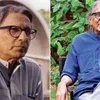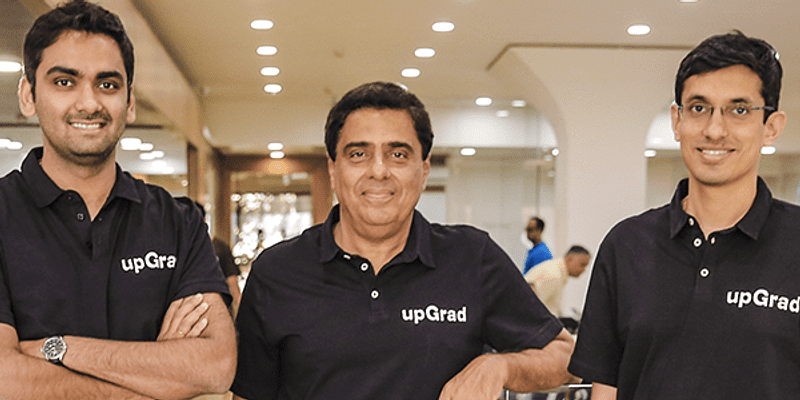Why creativity, simplicity, and empathy are so valued today: Param Venkataraman, Chief Design Officer, Fractal Analytics
Mindful design can help us focus sharply on what’s truly important in a world of clutter. Designers also need to focus on broader issues of sustainability, responsibility, and ethics, according to design expert Param Venkataraman.
Param Venkataraman leads design at Fractal Analytics, and has over 22 years of experience in design and innovation leadership roles across companies like IDEO, Dr Reddy’s, Kantar, GE Healthcare, and Sapient. His work is at the intersection of AI, engineering and design.

His work is a featured case study in IDEO U’s course on Designing for Change. Param has served on the Executive Council of The Centre for Emerging Market Solutions at Indian School of Business (ISB), Hyderabad.
Param is a speaker at the upcoming DesignUp 2019 conference in Bengaluru, for which YourStory is the media partner. See our earlier coverage of DesignUp 2018 and 2017, and our d.Zen (‘Design Zen’) section for more resources on design.
Param joins us in this comprehensive interview on the key role of design today, the contribution of countries like India, and the strategic function of design in the enterprise.
YourStory: In a world of information overload and unending distractions, what do you see as the key role of designers?
Param Venkataraman: Simplification. With technology making more and more things possible – and as a result, leading to an explosion of information, products, services, and features – good design can help us become sharply focused on what’s truly important and why it matters to users, how that technology or feature truly enables that, and designing an experience that is simple, intuitive, and delightful.
This will require designers to be truly empathetic, mindful, and responsible. Empathy will help connect with and understand what users really care about, and identifying their ‘jobs to be done’ – not just their functional needs, but emotional too.
We need to be mindful so that we design with intentionality at every step in the process. This means thinking about every little step that a user takes in the journey, and every interaction at every touch point. And finally, responsibility is being conscious of the short-term as well as long-term impact, and about the unintended consequences of the technology or feature.
YS: What are three recent examples you have come across of outstanding design, and what makes them special?
PV:
• The story of an Apple Watch helping a biker after a hard fall was very inspiring. Good design is about solving for the most important unmet needs in a way that is simple, intuitive, and delightful. I thought this story exemplified all of this so beautifully.
• Second, I thought Apple’s ScreenTime feature in iOS is a good example of empowering and nudging users to take control of their time, and in dealing with all the distractions that are fuelled by smartphones.
• I’ve been a fan of the Sri Lankan architect Geoffrey Bawa for a while. Earlier this year, I had the opportunity to visit and experience his work in Sri Lanka. Lunuganga Estate was particularly inspiring. He incorporates and uses the local context – the environment, the local materials – in the architecture meaningfully. Bawa’s work is memorable, and yet subtle and elegant.
YS: What are the key ways in which design can help visualise and understand large data sets/patterns more effectively?
PV: I like to think of understanding and visualising large amounts of data as “sensemaking”. Design can help in the following ways.
Design research or design ethnography can help in uncovering the “why” behind the data. Big data or large data sets can give us good insights about the “what”. By being on the ground, meeting real users, and studying the local context relating to that data, we can uncover the underlying motivators and factors contributing to that behaviour. This can add more colour to the data sets, and even help uncover new patterns.
‘Information design’ is the art of effective communication of complex data. The work done by people like Edward Tufte and David McCandless has shown how complex and large amounts of data and information can be simplified and communicated in a meaningful manner.
YS: What design lessons do you think ‘emerging economies' like India can share with the rest of the world?
PV: A fellow designer recently asked me what I thought about “designing for the next billion”. India has been a nation of billion people for a while. We were close to 300 million people as early as the year 1900. And so I believe a country like India has several lessons and stories to share with the rest of the world.
Sustainability: Our traditional and indigenous practices in architecture (like using mud or other natural and locally sourced materials). Given global warming and climate change around the world, incorporating some of these practices could transform the way we live a more sustainable and energy efficient life. Unfortunately, these traditional practices are uncommon even within urban India now. There is an effort to bring this back, but we’ve got a long way to go before it comes back into the mainstream.
Service design: Hospitality is in the fabric of our culture and ethos. And that shows up in our ability to provide great customer service. Again, a lot of this is lost when it comes to corporate India, but if you look at the grassroots or the “unorganised” markets (like the local kirana shopkeepers, or the famous dabbawallahs in Mumbai) – the quality, consistency, and personalisation of the service is outstanding.
The neighbourhood pharmacy guy is a WhatsApp message away from sending you a strip of medicines that you need urgently. With the exception of luxury or premium brands and services, this culture of hospitality hasn’t really translated to the rest of corporate brands in India.
YS: What are some key principles for keeping design simple while also making it effective for diverse users?
PV:
· Design for your users, not for yourself (or your sponsors).
· Less is more (or as Dieter Rams said: “As little design as possible”).
· Prototype, prototype, prototype!
YS: How should techie founders deepen their understanding of design so as to offer better products/services?
PV: Founders can deepen their understanding of design by hiring and empowering senior design leaders to be part of the founding team or management team. They should ensure that every product development sprint is grounded in user needs via ethnographic/user research.
Founders should focus on building several low-fidelity prototypes and gathering user feedback. Only after that should they jump into product development.
YS: What do you see as the connection between art/aesthetics and design, and how can appreciation of these similarities and differences lead to better design?
PV: I believe art and design are two very different worlds and have very different intentions. Art is about creative expression, often with a strong point of view. Design is an empathetic and creative way of solving problems that matter to people.
Design is often misunderstood and equated to aesthetics. That’s as inaccurate as saying that a chef’s work is limited to the presentation of the food. As a wise man once said, “Design is not just what it looks and feels like. Design is how it works.”
YS: What human and social skills matter even more for designers these days, in a world of increasing automation?
PV:
• Empathy: staying connected with one’s customers and users
• Creativity: staying curious and inspired
• Collaboration: ability to collaborate with non-designers (be it technology or business experts)
• Adaptability: being open and flexible to continuously evolve and refine one’s methods, tools, and practices.
YS: How can designers acquire more of a strategic role in companies? Is having a 'Chief Design Officer' enough?
PV: There has indeed been a significant change in the way organisations are seeing the value of design – at least, in the case of progressive organisations. McKinsey has published a ‘Design Index’ that talks about the role and value of design in businesses. Similarly, InVision has published a ‘Design Maturity Model’ that has defined different levels of engagement and impact of design in business.
Having a Chief Design Officer is important, and can certainly help, but it’s not entirely sufficient. There are several other ingredients that have to come together for designers to have a strategic role. Here are a few of them, though not an exhaustive list.
• C-level champion: Someone in the C-suite must see the value and believe in the potential for design to impact the core business, and must be willing to invest in building the right capabilities.
• Strategy and goals: The design team’s goals need to be aligned very strongly to the strategic objectives and choices of the organisation. This may seem obvious, but unless it’s clearly articulated and the dots are explicitly connected between organisational strategy and design’s reason for existence, it rarely ends up being a strategic initiative.
• Shared vocabulary: Designers and design leaders need to be able to understand and speak the business language, just as business needs its own education in design vocabulary and principles.
• Organisational design and structure: Just like all other functions that are critical to the business (like sales, marketing, R&D, manufacturing, HR), design needs to be considered and organised as a distinct function that has direct impact on the success of the organisation.
• Integration + autonomy: Design teams need a certain amount of autonomy and empowerment to operate in a way that is suitable for their work (for example, designers need to travel and be in the actual user context regularly). However, designers need to ensure they are not perceived as an ivory tower in the organisation. Integration and inclusion in the daily workings and fabric of the organisation is critical.
• Patience capital: Organisations need to appreciate the time and iteration it takes to see the correlation between design output and business impact, as with any other new or unfamiliar initiative for the organisation.

YS: What are three books designers must have on their bookshelf?
PV:
1. Dieter Rams: Ten Principles for Good Design
2. Ayse Birsel: Design the Life you Love
3. Geoffrey Bawa: The Complete Works
YS: As we come to the close of 2019, what are three key emerging design trends you see in 2020?
PV: My sense is that ‘AI by Design’, ‘Responsible design’, and ‘Enterprise design wakes up’ are going to be three emerging design trends in 2020.
AI by Design: In the last couple of years, the proliferation of AI technologies has exponentially increased in several areas of our lives and will only continue to do so. In the next year, I am anticipating that organisations will become more user-centric in the way they think about AI and its application and usage. We’ve already seen that most chatbots don’t end up solving a real user need, either because there isn’t enough data for the chatbot to be truly intelligent, or because the use case the chatbot is deployed for isn’t contextually relevant to the user.
Responsible design (or ‘mindful design’): Designers will become more mindful and pay more attention to the impact of their design decisions on the planet, the users and their ecosystem. This will mean being frugal and deliberate in the way they think about resources, production, longevity, and reusability of their solutions.
Enterprise design wakes up: While the consumer world has seen an abundance of good design in the last few decades, the enterprise world and its users have suffered through years of thoughtless design, poor usability, and sub-optimal user experience. The next year will hopefully be that inflection point for enterprise design to raise the bar.
(Edited by Teja Lele Desai)













![[TechSparks 2020] Jobs For All: A discussion on formalising gig workforce, building digital identity, and more](https://images.yourstory.com/cs/2/77e43870d62911eaa8e9879653a67226/jobs-1-1604046086024.PNG)
